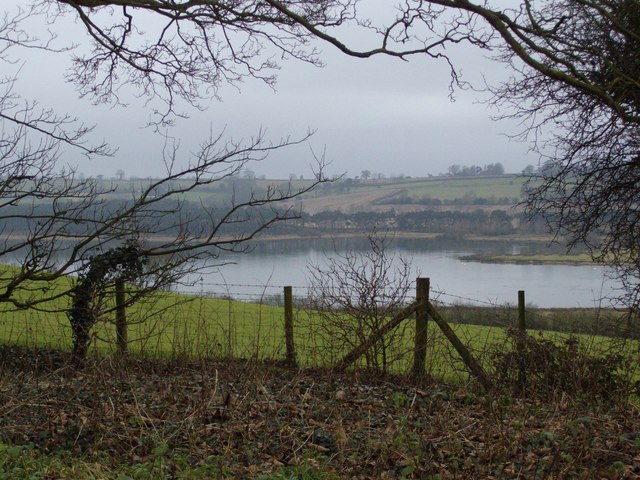LEATHERLAND LIVES 1800 - 1900
William and Jane Leatherland's children. Sarah (1816), Robert (1819) and James (born and died 1822) were the last children.
- Sarah turns up in the 1841 census [very hard to find - she was indexed as "Setherland"!] as an "FS" (female servant) in the household of a victualler James Pettifer in Swan Street, Rugby. Sarah's census indexers again try their best to confuse us by indexing her as "Leatherhead" in 1851 but I eventually tracked her down again as a house servant in Dunchurch, near Rugby. She was still single. The householder was Benjamin Johnson a draper and grocer who employed two men. I don't know what happened to her after that, although there is a marriage in Coventry which I plan to investigate.
- Robert has not been clearly traced, but there is the possibility that he moved to Broughton Astley, Leicestershire.
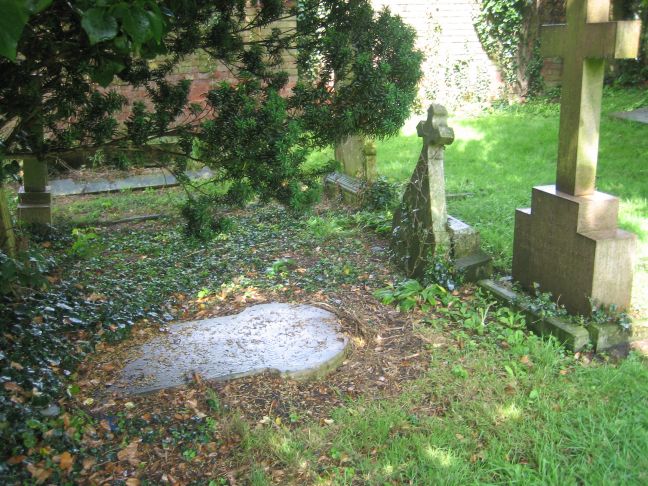
St Faith's Kilsby Churchyard
Now let's go back to my direct ancestor Samuel, born in 1810 who married Elizabeth Crofts in 1835. They had ten children between 1835 and 1855. In his early years Samuel worked as a brickmaker. We know this because he gave this as his occupation in the parish register, the census, and on his children's birth certificates. There was a brickworks in Kilsby and two brickyards in the neighbouring village of Crick. [See Leatherland Family Biographies for more information on this].

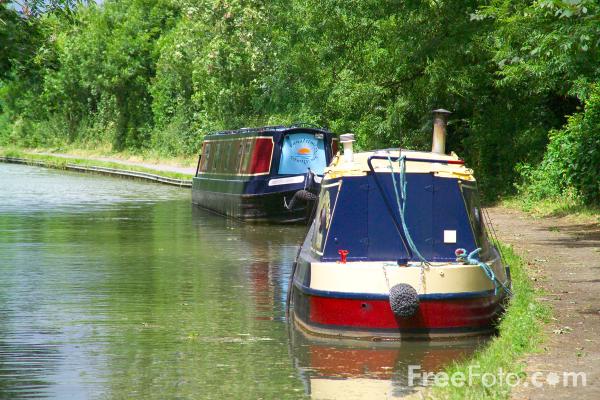
The canal at Crick
Samuel's sons Samuel and William were born in the late 1830s. A daughter, Ann, was born in 1837. Samuel and his wife and children then made a bold move. The 1841 census shows them living in Balcombe, Sussex. It is likely that this was because, as a brickmaker, Samuel was employed making bricks for the Balcombe viaduct on London to Brighton railway line.
Something Odd
By 1843 Samuel and family had returned to Kilsby. Elizabeth had several more children who were born and baptised there. However, in the 1851 census something odd happens. Samuel is there aged 41 but he is living in Crick as a "lodger" in the household of 81 year old Thomas Lee. His wife Elizabeth is living in Kilsby with their children, she is shown as an agricultural labourer's wife.
I did wonder whether they were living separately although there were two further children born to them later in the 1850s. Another odd fact is that in 1859 when his wife died, Samuel was not the informant on the death certificate. Both could have rational explanations, but it does make me wonder especially given what happened after her death . . .
Samuel Remarries the Dairymaid
In 1861 Samuel was a 51 year old widower working as an agricultural labourer in Kilsby, and living with two of his sons and two of his daughters. In 1867 at the age of 57 he married Sarah Whiteman who was 30 years old. Sarah was single although she already had two children. Samuel and Sarah then had a child of their own, Henry in 1867. Ten years they had a daughter, Sarah Jane - Samuel by this time was 67, these Leatherlands clearly have stamina ! By 1891 Samuel, now aged 81, was described as a "retired agricultural labourer" . He died at the age of 84 in Kilsby.
Identity Crisis : Samuel or William (or Thomas) ?
The identity of the first few children of Samuel and Elizabeth cause some confusion (to me anyway, see if you can work it out). Here is the evidence.
We know that they had a son called Samuel baptised in Churchover parish church on April 30th 1835. He was probably born at around that time. We also know that they had a son called William who was baptised in Churchover on 4th August 1839 - but William may have been born earlier, because the later censuses suggest he was born around 1835. We also know that a daughter Ann was born in February 1837 - we have her baptism and birth record in Kilsby Independent Chapel in April 1837. So far so good.
Samuel and Elizabeth also had a son in 1839. There is a birth certificate showing a baby boy born to Samuel and Elizabeth. But the birth certificate does not name the boy ! This sometimes happened if the child died before they could decide on a name, but I have found no evidence of an infant death. Now we also know that they had a son called Thomas because he appears in the censuses and Thomas’s age suggests he was born in 1839, so this may be Thomas’s birth (although it could be William’s !).
1841 Census : Balcombe
In 1841 Samuel Letherland was 30 years old. He was now living in Balcombe, a small town in Sussex. Despite the different spelling of the surname, I'm sure this is him because (a) the census says he was born outside Sussex (b) the names of his wife and daughter match (c) daughter Ann is there (d) his occupation bricklayer is the same as on later birth certificates (e) Samuel has not been found in any other census in 1841.
The Kilsby census had a note that four men from the village were working away from the village. Samuel’s occupation was a bricklayer. Balcombe has a large brick viaduct on the London to Brighton railway line, which was built around this time. So it is likely that Samuel moved from Kilsby to Balcombe to make bricks to build this viaduct. Samuel and Elizabeth had a daughter, Mary, born in May 1841 when they were living in Balcombe. Although the birth certificate shows she was born in Balcombe, she was baptised in Churchover in 1842 evidence that the family had moved back by then.
Back to Kilsby
The next children were born in Kilsby : son, John, was born there in 1843. They also had a daughter, Hannah, born 1845. Samuel is still described as brickmaker on the birth certificates, although John was baptised in Churchover.
Samuel the Brickmaker
There were no brickworks in Kilsby, but there were two brickyards in Crick, one along the road to West Haddon (called Foster's brickyard) and another along the south side of the Watford Road. [Information courtesy of Gren Hatton].
The Grand Union Canal was opened through Crick in 1814, and it is likely that the bricks for the Crick tunnel and bridges were produced in Foster’s brickyard. The spoil heaps from the tunnel can still be seen next to the site of the old brickyard (which was later called Brick Kiln Close).
The Watford Road brickyard in Crick was run during the late Victorian period by Isaac Wakefield and William Faulkner. This brickyard closed after the First World War, and the brickyard buildings were demolished in the early 1930s.
The need for bricks was a development of the late 18th and early 19th centuries. Bricks started to be used for building houses (helped by the abolition of a Brick Tax in the late 18th century) and for canal construction.
The Kilsby Railway Tunnel was built in the hills near Kilsby between 1834 and 1838. It is 2,223 metres long and the tunnel walls used 30 million bricks. The tunnel is part of the London to Birmingham railway. It seems likely that Samuel worked in brick construction for the tunnel.
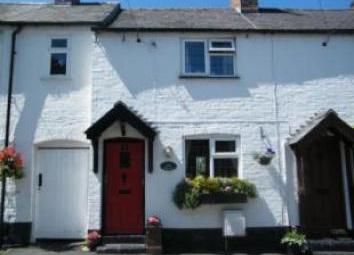
19th century cottage in Shearsby, Leics
William Gets Married
In June 1859 his son William, a labourer, married Elizabeth Smart in Shearsby, Leicestershire.
Elizabeth Dies
In November 1859 Samuel’s wife, Elizabeth, died of phthisis (TB). She was 42 years old. Interestingly, Samuel was not the informant on the death certificate. The informant was Mary Matthews, wife of William Matthew an agricultural labourer, who was present at death. This might perhaps support the theory that Samuel was not living with his wife at her death, although it simply be that he was too upset to act as informant.
Mary Marries
In November 1860 his daughter Mary, a 20 year old servant, married John Luck, a 24 year old shoemaker, in Kilsby. The marriage certificate now gives Samuel’s occupation as labourer. His brick making days seem to have ended.
In 1861 census Samuel was a 51 year old widower working as an agricultural labourer in Kilsby, and living with two sons and two daughters.
More Family Marriages
In March 1863 his daughter Hannah, a servant, married William Cousins in Kilsby.
In October 1866 his son, Samuel, married Susanna Foster in Churchover. Samuel (father) did not witness the marriage certificate, although this may not be significant. The marriage certificate gave Samuel senior’s occupation as labourer.
Samuel Marries Sarah the Dairymaid [and see "Leatherland Biographies"]
In March 1867 at the age of 57, and eight years after his first wife’s death, Samuel re - married. His second wife was a much younger woman called Sarah Whiteman. She was a 30 year old house keeper and a spinster. She was 27 years younger than her husband. In 1861 census Sarah was a 23 year old dairy maid servant, living with the Cowley farming family.
Was Samuel Having an Affair with Sarah ?
Sarah was single but when she married Samuel, but she already had two children : James born in 1859 and Annie born in 1861. Their father is not named on their birth certificates, but perhaps Samuel was their father, although this would mean that the first child was conceived when Samuel’s first wife was still alive.
There is some interesting evidence which suggests that Sarah’s son, James, had a Leatherland connection well before his mother married Samuel. This is because in the 1861 census, 1 year old James Whiteman was living in the household of Henry and Hannah Swingler as a boarder. Now Hannah was Samuel’s sister who married Henry Swingler in 1854 in Kilsby. Why would 1 year old James Whiteman be staying with Hannah’s family, if there was no Leatherland connection ? Perhaps Sarah Whiteman did not want or was unable to look after the child, and Samuel asked his sister to look after him. But why would Samuel do that unless he was the father ?!
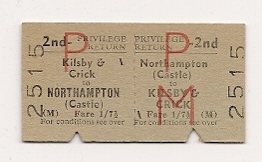
Samuel and Sarah had a son of their own, Henry, in July 1867. Samuel’s occupation on the birth certificate remains farm labourer. 
In 1871 Samuel was 61 years old, living in Kilsby with his new wife, Sarah, and still working as an agricultural labourer. In 1877 they had a daughter, Sarah Jane, who died as a young baby.
In 1879 Samuel's daughter, Elizabeth, a 26 year old servant, married Edward Twells, a carpenter from Rugby, in Kilsby.
In 1881 Samuel was 71 a farm labourer, still living in Kilsby with Sarah and their son, Henry. By 1891 he was described as an 81 year old "retired agricultural labourer" in Kilsby, living with Sarah and a 49 year old lodger, Ann Bird. Ann must have been a close friend as she remained living with Sarah after his death and was still there 20 years later in 1911.
Samuel Dies
Samuel Leatherland died in Kilsby in February 1894 at the grand old age of 84. The informant on the death certificate was his wife Sarah. Sarah lived until 1915 but clearly fell on hard times and died in Rugby Poor Law Union Workhouse in 1915.
Samuel had an interesting life. He worked as a brickmaker then later became a farm labourer. He lived to an old age and married twice. And he fathered a total of thirteen children over a period of forty two years !
When I spoke to my grandfather about his family history, he never mentioned Sarah who would have been his "step-great-grandmother", although he might have remembered because he was 17 when she died. Unfortunately I was not aware of Sarah's existence at the time, so I did not have the opportunity to ask. However, there is one small clue in a letter from my great uncle in which he seemed to think that his grandmother's first name was Sarah.
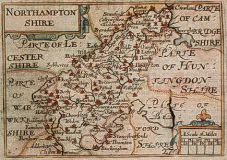
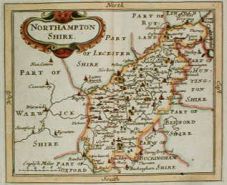
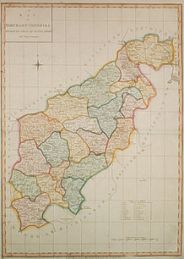
Old Northants Maps - images courtesy of www.nigelspencer.co.uk/web-pages/old-map-pages/old-map-northampton.htm
An Analysis of the 1881 Census : Northants Leatherlands
I analysed the results of a search for all Northants Leatherlands in the 1881 census. By 1881 my own direct line was based just over the border in Warwickshire. There are 21 Leatherlands in the county in 1881, 11 in the Brixworth registration district, 1 in Kettering, 1 in Thrapston, and 8 in Peterborough (which used to be part of Northants). Upon further study this breaks down into a handful of families as follows.
James and Caroline Leatherland lived in Hollowell. They had four daughters and one son all born in Hollowell living with them. James was a 33 year old millwright (a millwright was a craftsman or tradesman engaged with the construction and maintenance of machinery).
Hannah Leatherland was a 59 year old widow living with her 19 year old millwright son, William, in Hollowell.
Hollowell Reservoir (© Image Copyright Michael Cox and licensed for reuse under this Creative Commons Licence)
John and Maria Leatherland lived in Guilsborough. John was a 54 year old boot and shoe maker who had been born in Hollowell. Maria was born in Leicester.
Elizabeth Leatherland was a 61 year old widow, who formerly worked as a silk weaver. She was living in Kettering with her daughter and son-in-law, Annie and Henry Staines.
William and Sarah Leatherland lived in Peterborough. William was a 34 year old engine driver. He was born in Broughton Astley, Leicestershire. They had three sons and two daughters, the eldest born in Leicestershire, the youngest in Peterborough.
James Leatherland was a 21 year old railway signalman, born in Lincolnshire, who was living as a boarder with a family in Thorney (now part of Cambridgeshire). There were two other boarders and one lodger in the household.
Mary Leatherland was a 22 year old domestic servant / parlourmaid who lived in the Rectory in Lowick, a small Northants village. She was born in Hollowell.
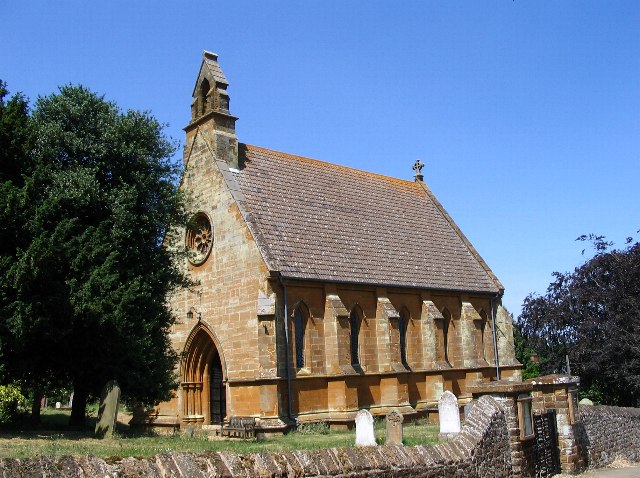
© Copyright E Gammie and licensed for reuse under this Creative Commons Licence
The Hollowell Leatherlands are descended from my branch. Leatherlands remain living in the Hollowell / Guilsborough area and Geoff Leatherland of Dodford helped my uncle with early family history research. The census analysis shows the growing influence of the railways, the significance of boot and shoe making in Northants, and migration between Leicestershire and Lincolnshire. It's also interesting to note that the name is consistently the Leatherland spelling in Northants.
Who was Ann Bird ?
Ann Bird was living with my great x 3 grandmother, Sarah Leatherland, in the 1891, 1901 and 1911 censuses. She was not a relative. In 1891 she was described as a lodger, in 1901 a lodger and housekeeper, in 1911 a boarder. In 1891 Sarah's husband, Samuel Leatherland, was 81 years old so she may have moved in to help Sarah to look after him, although Sarah was nearly the same as age as Ann. The odd thing I noticed about the census entires is that Ann was described as a married woman. In fact the 1911 census said she had been married for 45 years and that she had five living children. So how did she end up lodging with Sarah ? Where were her family ? Had she left her husband and her children ?
I did some digging and found that Ann was indeed a married woman. She was born in Towcester, Northants in 1841. Her maiden name was Cryer. Her father died when she was a girl and she had three brothers. Her husband's name was Charles Evans Bird. He was three years older than her. They married in 1864.
In the 1871 census she was living with Charles and their three children in Northampton. Her mother Hannah Cryer was living with them too. In the 1881 census Ann and Charles were still both living together in Northampton. He was a 'Blake Sole' Sewing Machine Operator. (The Blake sole sewing machine was invented by an American, Lyman Reed Blake, and was designed for sewing the soles of shoes to the body of the shoe.) Their eldest child Arthur was 16, the youngest Florence was 5.
So how did Ann end up lodging with Sarah Leatherland ten years later ? And how did she come to be in Kilsby, ten miles from where she lived with her family ? Had her husband died ? If so, why did she not live with one of her children ? Had there been some sort of a family rift ?
When I looked at the 1891 census I found that Charles Bird was still alive. In fact he was still living in Northampton with their five children. The youngest child Frances was only six years old. I was interested to note that a 31 year old lady called Mary Mott occupation 'housekeeper' was living with them as a boarder. She was 14 years younger than Charles. Perhaps, I wondered, she was the reason why Ann had left home ??
Then I looked at the 1901 census. By then Charles Bird had moved a few miles north of Northampton to the village of Kingsthorpe. Two daughters and one son lived with him. And Mary Mott was still there, occupation housekeeper. The children who were living at home were twenty-five, nineteen and sixteen years old. Was Mary looking after them ? I don't think so. Was she "looking after" Charles ? Quite possibly.
I wondered whether Charles was a bigamist. Did he ever marry his Ms Mott ? So I looked for a marriage entry. I found one in 1912 : Charles Bird married Mary Mott.
So what happened to Ann ? Well I found a death registered for Ann Bird in Northampton in 1912. I have yet to see the death certificate, but the age at death is right and I suspect that this is the right Ann.
Both Ann's death and Charles' remarriage seem to have occurred in the same quarter of 1912, so it seems that as soon as his wife from whom he had been separated for over 20 years died, Charles lost no time in marrying his younger live-in lover !
And what became of Sarah ? Well as you may have read elsewhere she lived for a further three years, but died in the Rugby Poor Law Workhouse Infirmiary in 1915.
An interesting tale.
Odds and Ends
There are plenty of ancestors who seem to disappear without trace or reappear in unexpected places.
For example, Mary Leatherland suddenly appears in the 1851 census as an unmarried 62 year old house servant in Mount Street, St George Hanover Square, Middlesex (now central London). I'm sure this is one of mine because she born in Kilsby. She resided in the household of Henry Philips, a solicitor. Philips was born in the East Indies although he was a British subject. I can find no relevant baptism in Kilsby for Mary. Sadly two years later she died of dropsy in the Battersea / Clapham Poor Law Union workhouse. I wonder when she went to London and what prompted the move ?
Contact me : davidr4u@btinternet.com
